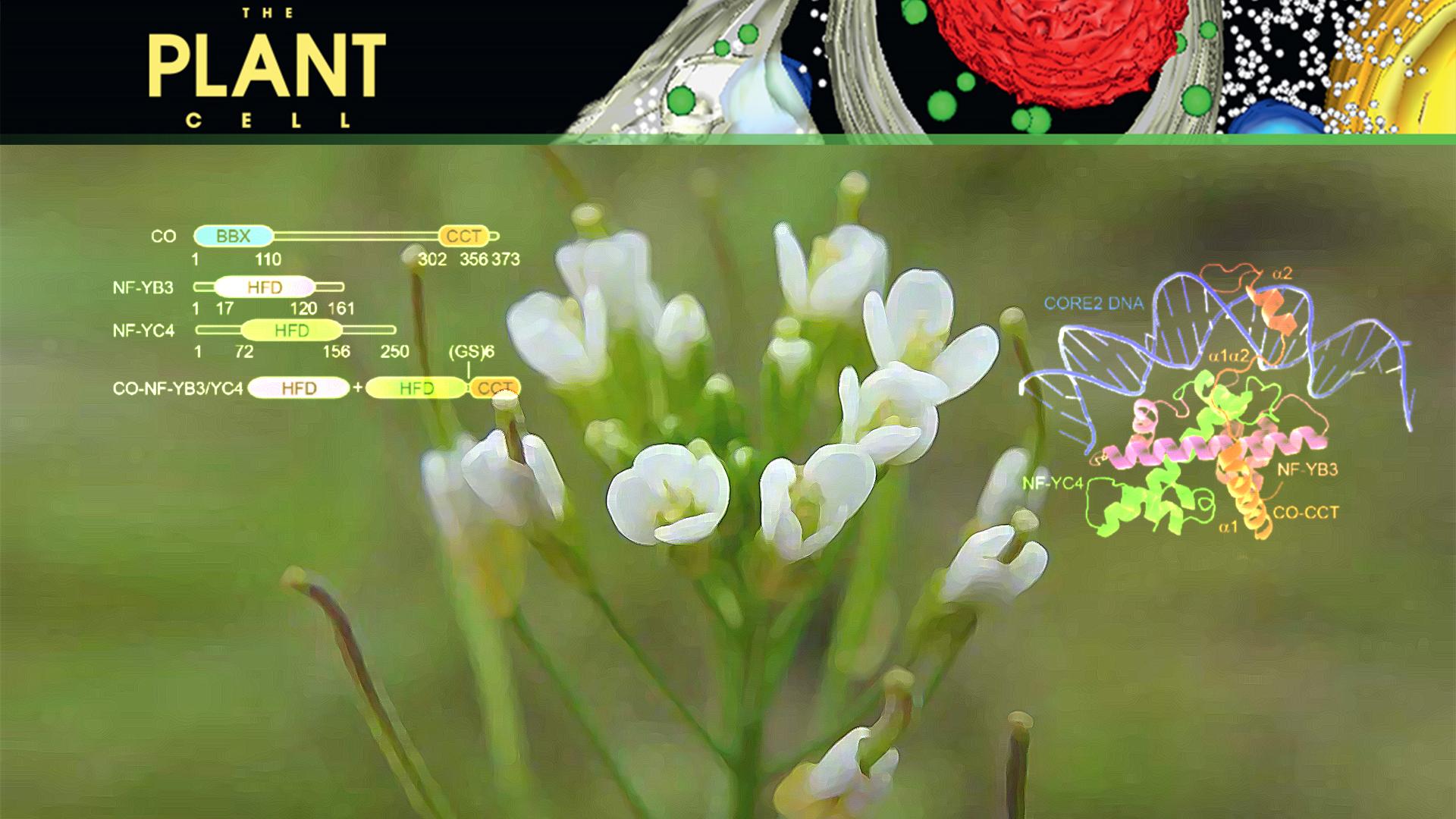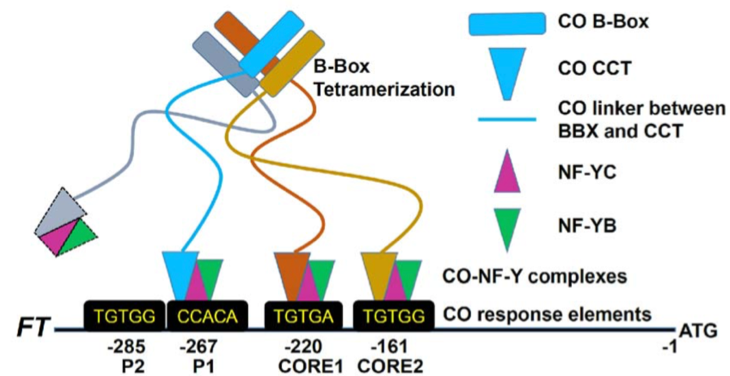Recently, Dr. Jiamu Du’s group from the Institute of Plant and Food Science of the Department of Biology at the Southern University of Science and Technology (SUSTech) published a paper entitled “Structural insights into the multivalent binding of Arabidopsis FT promoter by the master transcription factor CO-NF-Y complex” in the scientific journal Plant Cell. They reported how Constans (CO) regulates the transcription of Flowering Locus T (FT) via its C-terminal CCT domain during the floral switch in Arabidopsis.

The floral transition, which controls the switch from vegetative to reproductive growth, is a critical event in the lifecycle of plants. Multiple environmental clues such as light and temperature, as well as endogenous signals such as hormones and aging, can influence and regulate the floral transition. These signals are translated into gene regulation events that control the expression of FT, encoding the key flowering integrator florigen. Many transcription and epigenetic factors have been investigated in detail by Dr. Jiamu Du’s group and related papers have been published in Nature Genetics, Nature Communications, Nature Plants, and Plant Cell.
Here they report that CO, a member of the photoperiod pathway forms a trimeric complex with nuclear factors YB and YC (NF-YB/YC) to recognize the CO response elements (COREs) in the FT promoter in a sequence-dependent manner. Firstly, the four previously characterized cis-elements in the FT promoter-proximal region, CORE1, CORE2, P1, and P2, are all direct CO binding sites by performing in vitro binding assays, and the binding affinity are similar. Then they determined the crystal structure of the CO-CCT-NF-YB/C trimer in complex with CORE2 and CORE1 DNA, finding that CO specifically recognizes a TGTG motif shared by all four elements.

Figure 1. The overall structure of CO-CCT–NF–Y in complex with FT CORE elements
Their EMSA data confirmed that the FT promoter could capture multiple CO-CCT-NF-Y complexes. In pull-down assays, their data suggest that the CO-B-Box domain forms a multimeric assembly, which is consistent with the results of SEC-MALS assays. Hence, they built a plausible biochemical model suggesting that the tetrameric CO-B-Box recruits four copies of NF–YB/YC and binds to CORE1, CORE2, and the P1 or P2 element simultaneously. The multimeric CO-CCT-NF-Y complex possesses greatly enhanced binding activity towards the FT promoter, suggesting that B-Box mediated multimerization helps CO bind to FT with high affinity and specificity.

Figure 2. Model for the specific binding and regulation of FT by the CO–NF–Y complex
According to this model, the B-Box domains of CO form a tetrameric assembly to stretch the four corresponding CO-CCT–NF–YB/YC trimeric complexes to simultaneously bind to the CORE1, CORE2, and P1/P2 elements in the FT promoter. This multiple binding would achieve both high specificity and affinity.
The first author of this paper is Xinchen Lv, a visiting doctoral student from the Center for Excellence in Molecular Plants Sciences at the Shanghai Center for Plant Stress Biology, Chinese Academy of Sciences (PSC). Dr. Jiamu Du from SUSTech is the corresponding author. Dr. Yuehui He and Dr. Chanhong Kim from the PSC, and Dr. Zhe Wu from SUSTech supervised this study. The staff of the BL19U station at the National Protein Science Research Facility (Shanghai) also provided support for this work.
This research was supported by the National Key Research and Development Program of China, the Key Project of Shenzhen Science and Technology Innovation Commission, the Guangdong Provincial Key Laboratory of Molecular Design in Plant Cell Factory, and SUSTech.
Paper link: https://pubmed.ncbi.nlm.nih.gov/33693873/